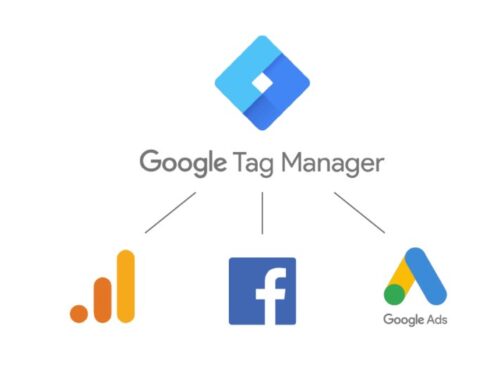
SaaS SEO – Actionable Guide to Grow Your SaaS Business with SEO
Author : Hardeep Singh
April 18, 2024
Many SaaS companies try to use SEO to tap into natural traffic streams. So, how does this work? How can you include SEO into your SaaS automated marketing strategies? We’ll go over what SaaS SEO is, why it’s important for your SaaS business, and how to properly implement SaaS SEO practices in this comprehensive SaaS SEO guide.
What is SaaS SEO?
SaaS SEO is the most frequent method of increasing regular traffic to your SaaS site by using tactics that help you rank at the top of Google’s query results pages. Standard approaches include conducting in-depth keyword research, conducting site reviews, improving on-page SEO, developing high-purpose item pages, producing content, and obtaining backlinks from well-known sites.
Actionable Guide to Grow Your SaaS Business with SEO
Step 1- Set Goals & KPIs: The fundamental component of any SEO system, whether SaaS or not, is defining targets and KPIs. A significant caution with SEO is that it frequently necessitates a protracted investment to view your mission results. Defining objectives and describing KPIs are quite beneficial at this point. They aid you in focusing your attention on the most important factors. They also aid you with remaining zeroed in the event that there appears to be no growth in the backdrop.
A common SEO goal for SaaS companies is the following:
“Increase monthly income by Rs. 1 crore over the course of a year.”
The KPIs would be the same:
- In a year, increase natural traffic by 100%.
- In the first three months, increase the item page transformation rate by 20%.
- Positioning 1,000 watchwords in positions 1-10 for target catchphrases.
Your KPIs will be influenced by your company objectives as well as other unique elements of your industry vertical.
Step 2- Characterize Your Target Market and Customer Personas: Finding your image’s motive, target market, and customer personas is the next step in developing a SaaS SEO technique. Before you begin, you need to have a good understanding of your company, your target market, and the precise financial characteristics of your potential customer base, just as you would with any other marketing strategy. These tidbits of information will be used to create content and marketing pieces, as well as to fuel your catchy research.
Step 3- Competitors should be identified and analyzed: You should conduct thorough research to set your SaaS company different from the competition. You must completely differentiate yourself from your competitors, understand what they’re doing, and figure out how they want to defeat you.
Your SEO research should include the following:
- The procedure should be followed if something goes wrong.
- Their substance profile’s nature.
- Sorting and displaying approaches for content.
- Profiles of backlinks.
- Site architecture and user experience design.
Finally, you must comprehend their unique selling propositions (USPs) and separate the administration areas where they provide services that you do not. This will reveal regions of chance where you can profit.
Step 4- Lead Keyword Research and Build a Keyword Strategy Tailored for SaaS: One of the most important techniques in SEO for SaaS – for both client items and B2B pieces – is keyword research. All things considered, those are what your target clients enter into Google. You may interact with your clients by optimizing for certain search phrases.
However, developing a substantial catch approach necessitates examining not just search volume, but also searcher intent, competition (problem) level, and advertising channel phase (if you have a buyer’s journey, arranging watchwords for each step may be a huge help).
Step 5- Develop a Content Strategy and Produce Content That Is Better Than Your Competitors’: Then we develop a SaaS substance technique. This is what the content procedure is all about:
- How will you organize the content to aid SEO?
- What pages will you create, and how will you do it?
- Your strategy for generating content?
When considering content, you should think about the following channels:
- Content for a blog.
- Whitepapers, e-books, manuals, and other educational materials.
- Pages for landing and deals.
- Duplicate item.
- Substance in terms of appearance (e.g., infographics, photographs, and so forth.)
- Content on video (e.g., explainer recordings, demos, and so forth.)
- Slideshares and online courses.
- Recordings on the internet.
- Discharges from the press and media.
- Content for online entertainment.
- Promotions by text and video.
Step 6- Develop your technical SEO skills: A specialized SEO audit can help you figure out how to improve the overall presentation of your website. You should do a specialist SEO audit on a regular basis to ensure that everything is in good working order. Among the specialized problems to consider during a review are:
- Openness to crawlers and site indexability.
- Robots.txt (robots.txt) is a text file that.
- Sitemap in XML.
- The layout of the website.
- Information mistakes in a well-organized structure.
- Pages that have been broken (404 blunders).
- Chains should be diverted.
- Page loading time is slow, and the client experience is poor.
- Web Vitals in the Center.
- Versatility.
- Hreflang.
Step 7- Page SEO should be developed: The natural inquiry calculation by Google combines a number of on-page elements. On-page SEO, when paired with quality content, is a winning combination for higher natural search rankings.
The following are the basic guidelines for improving page SEO:
- Make sure the first line of your title label contains your slogan.
- Include your page title in the h1> tag.
- For subheadings, use the h2> and h3> tags.
- Use your catchphrase inside the first 100 words of your text.
- Use LSI catchphrases and equivalents.
- Content creation that is oriented toward the client’s experience.
- Enhance meta-representations.
- Pictures should be improved.
- Make use of outbound connections.
- Make use of inner joins.
- Using a variety of content types, such as pictures and videos, to help increase stay time and decrease skip rate.
- Cannibalization is a kill keyword.
- Make sure your spelling, grammar, and text style are all correct.
- Use SEO-friendly URLs.
Step 8- Analyze and track data: The final and equally important component of the SaaS SEO strategy is a framework for estimating and tracking results. In a typical SaaS SEO system, there are a few factors to consider:
- Rankings – The position of your website in Google for a certain set of keywords.
- Natural traffic – This is the traffic that comes to your site from natural means.
- Changes – The modifications that occur on your site as a result of natural traffic.
Both Ahrefs and SEMrush have fantastic position tracking tools. Then Google Analytics and Google Search Console come in handy for tracking natural search traffic. Although you might start by creating relevant Google Analytics targets to monitor changes in natural traffic, following transformations may be more difficult.
Conclusion
So, next time, you wish to outsource your SEO work, please feel free to get in touch with us anytime. Our team can help you to accelerate your business growth by outsourcing all your IT requirements to us.












